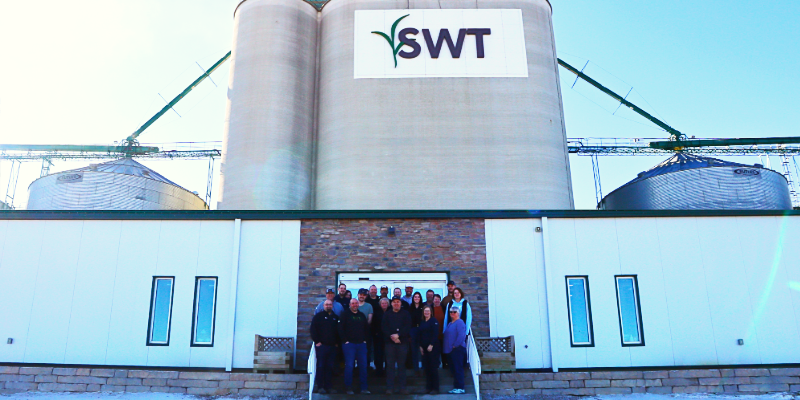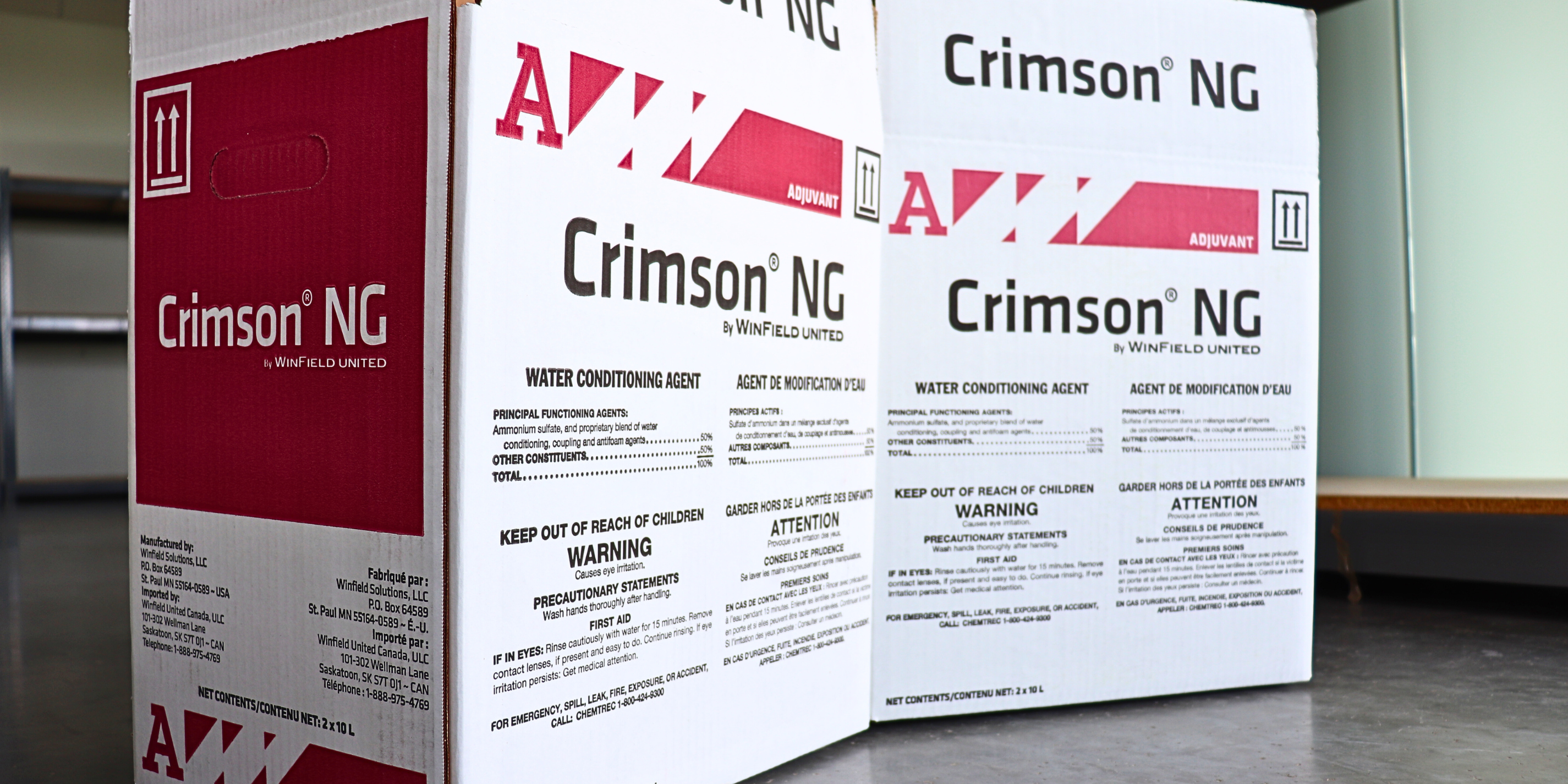Spring is on its way, and with it comes the final countdown for planning your next growing season. With input costs rising, and margins tighter than you may have experienced in recent years, it’s easy to consider cutting back on non-essential items. However, one input that should stay off the chopping block is seed treatment. This little investment plays a vital role in protecting your crops from pesky seed-borne and soil-borne diseases.
In this article, we’ll dive into why seed treatment isn’t just a “nice-to-have,” but a must-have for a successful season. Plus, we’ll explore some effective options for preventing disease in the 2025 growing season.
Why Use Seed Treatment?
In discussions surrounding seed treatment, it’s common to hear the argument that its effectiveness diminishes as seeding season progresses, particularly due to warmer soil temperatures and drier conditions. However, what gets forgotten in this discussion is that there is a cacophony of different diseases that prefer warmer, drier soil. Diseases remain persistent, no matter the temperature or moisture conditions, and this is why seed treatment should stay in your plan.
The table below outlines several common diseases that can threaten your crops, demonstrating the ongoing risk to seedlings no matter the prevailing environmental conditions:

When trying to reduce costs, it is easy to consider using seed treatment only on the more high-value crops like wheat, while leaving oats to fend for themselves. However, consider that oats are also susceptible to seed and soil-borne diseases, and if you don’t start off with a healthy plant stand yield is immediately limited.
How Do Plant Diseases Spread?
Plant diseases spread in various ways, and understanding these mechanisms is key to effective disease management:
- Soil-borne Diseases: Some diseases, such as aphanomyces, overwinter in the soil and can cause infections in the root hairs of susceptible seeds. These diseases can remain dormant until conditions are right for them to affect new crops.
- Seed-borne Diseases: Smuts are an example of seed-borne diseases. These pathogens are present either on the surface or within the seed itself, leading to reduced germination rates or infections that affect the roots as they develop.
- Both Seed and Soil-borne Diseases: Fusarium is a notable example of a disease that is both seed and soil-borne. Even if seeds are tested and found free of fusarium, they can still become infected if planted in soil already contaminated with the pathogen. This highlights the importance of treating both the seed and the soil to reduce the risk of infection.
Seed Treatment Products
When it comes to finding the right products that are tried and tested to meet the agronomic needs and provide a positive grower experience, here are three to consider.
Straxan™ from Corteva AgriScience
First available in Western Canada in 2024, Straxan seed treatment boasts three modes of action (tebuconazole, difenoconazole, and metalaxyl) from two different groups (3 and 4). Straxan provides excellent seedling protection against early season seed and soil-borne diseases including Fusarium spp, and Corteva data indicates it increases plant count and stand establishment. It is ready to use and is an easy to apply all-in-one suspension formulation. If wireworms are a concern, Straxan can be easily combined with Lumivia insecticide seed treatment to gain suppression against cutworms and grasshoppers and control against wireworms.
Rancona® Trio from UPL
Rancona Trio offers protection for both cereals and pulses and boasts aphanomyces suppression as well. It provides three modes of action (ipconazole, metalaxyl, and carbathiin) from three groups (3, 4, and 7).
“Rancona Trio controls the diseases that are otherwise a problem for our growers,” says Lucas Bell, Marketing Manager for McEwen’s Fuel & Fertilizer in Morinville, Alberta.
Rancona Trio protects against early-season root rots, including many of those caused by fusarium spp. Being an all-in-one, ready-to-use product, it gains favour with growers for its positive handling attributes.
“The handling experience with Rancona Trio is awesome,” elaborates Bell. “Rancona Trio flows as good as the top performer in the marketplace. The user experience of handling and flowability is extremely valuable, and Rancona Trio does not disappoint.”
An added bonus for handling is convenience for the grower, as it is applicable for pulses as well.
Zeltera® Pulse from Nufarm
Zeltera Pulse, a new offering from NuFarm, offers a ready-to-apply formulation for robust, broad-spectrum control of seed and soil-borne diseases in pulse crops. Like Rancona Trio, it offers early season suppression of aphanomyces. With concerns that metalaxyl is breaking down against pythium, Zeltera Pulse pairs this with three other options for a more complete disease package – inpyrfluxam (group 7), mandestrobin (group 11), and ethaboxam (group 22).
While mandestrobin isn’t a new active, its use in pulses is new, and it offers exceptional activity on fusarium and rhizoctonia. Inpyrfluxam offers industry leading rhizoctonia control, while ethaboxam tackles Aphanomyces and Pythium. Many of these actives are also strong on ascochyta and anthracnose.
“Zeltera Pulse is a product that has a great fit in my area of west-central Alberta as it provides suppression of Aphanomyces, which is our major pulse disease of concern.” says Dustin Ireland, Sales Agronomist at CashChem.
“When growers have used Zeltera Pulse, we see they get a better crop compared to other pulse seed treatments,” elaborates Ireland. “This starts off with improved emergence and early-season plant stand, which translates into yield.”
The Importance of Seed Testing
It’s often said that you can’t manage what you don’t measure, and this is particularly true when it comes to seed. If you haven’t submitted samples for seed testing yet, now is the time. Seed testing should be conducted after the grain has been cleaned in late winter or early spring, or in the fall right off the combine. Seed testing provides critical insights, from disease details to vital information on germination and vigour rates, and TKW. Having this information allows you to fine-tune your seeding rate to match the ideal plant population for your crop. It’s not just smart; it’s essential for giving your crops the best start to a healthy, productive season.
Seed labs are located throughout the prairies and generally have a 7–14 day turnaround for spring samples, giving you plenty of time to make the best decisions for your farm. Talk to your local WinField® United Independent Ag Retail for their top recommendation.
Yielding Results
The foundation for your maximum yield potential is set the day you put the seed in the ground. Make sure you know your TKW and germination rates to calculate the right rate for your desired plant stand. Protect that seed from the start by choosing to utilize seed treatments like Straxan, Rancona Trio, or Zeltera Pulse. These treatments provide an added layer of protection, ensuring your crops are safeguarded against potential threats, regardless of the soil temperature and moisture conditions at planting time.
.png?ext=.png)

